
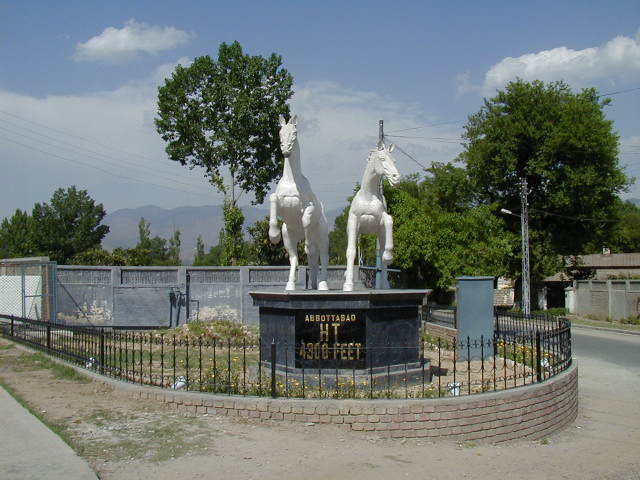

Abbottabad


Once The City of the Maple Trees
Located at a height of 4,120 feet (1256 m) above sea level, and 100 kilometres from Rawalpindi, Abbottabad is one of the most scenic and beautiful cities of Pakistan. Surrounded by pine abundant mountains and refreshing green hills of Sarban, it is one of the best-known hill resorts of Pakistan. The romantic weather of Abbottabad attracts thousands of visitors each year. The city was once called "The City of the Maple Tree", for its large Maple trees that lines the road sides, but were sacrificed for the sake of widening the roads. Allama Iqbal wrote his famous poem "abr" (cloud) , when he visited Abbottabad in 1904 and got inspired by the beauty and grandeur of Abbottabad.
Abbottabad and Surroundings (Photo Courtesy KS Bukhari)
 Although,
Abbottabad today is a thriving business and tourism city, it is traditionally a
military city. Besides the prestigious Pakistan Military Academy (PMA) in a
nearby village of Kakul, Abbottabad is home to three regimental centres of
Pakistan Army and Army School of Music. The PMA provided fame to Abbottabad for
many years, prior to the recent development of the city, from a non-industrial
backward area, to a busy modern business, economic and academic centre. The city
takes it roots from the British India, when Major James Abbott came this way in
1853 after the annexation of Punjab into the British dominion and laid the
foundation of a military cantonment. He also became the first Deputy
Commissioner of Hazara Division. By 1901 the population of the town and
cantonment had grown to around 7,764, which today stands at 300,000. Abbottabad
remained the dominating district till 1976, when one of its tehsils Mansehra was given the status of district,
which now consist of Mansehra and Batagram Tehsils. Subsequently in July 1991,
Haripur Tehsil was separated from Abbottabad and made district. Thus only the
Tehsil Abbottabad remained, which was declared as district. Major Abbott was so
mesmerized by the beauty of the area that when leaving Abbottabad with a
nostalgia a, he wrote a poem expressing his love and affection for the place he
founded.
Although,
Abbottabad today is a thriving business and tourism city, it is traditionally a
military city. Besides the prestigious Pakistan Military Academy (PMA) in a
nearby village of Kakul, Abbottabad is home to three regimental centres of
Pakistan Army and Army School of Music. The PMA provided fame to Abbottabad for
many years, prior to the recent development of the city, from a non-industrial
backward area, to a busy modern business, economic and academic centre. The city
takes it roots from the British India, when Major James Abbott came this way in
1853 after the annexation of Punjab into the British dominion and laid the
foundation of a military cantonment. He also became the first Deputy
Commissioner of Hazara Division. By 1901 the population of the town and
cantonment had grown to around 7,764, which today stands at 300,000. Abbottabad
remained the dominating district till 1976, when one of its tehsils Mansehra was given the status of district,
which now consist of Mansehra and Batagram Tehsils. Subsequently in July 1991,
Haripur Tehsil was separated from Abbottabad and made district. Thus only the
Tehsil Abbottabad remained, which was declared as district. Major Abbott was so
mesmerized by the beauty of the area that when leaving Abbottabad with a
nostalgia a, he wrote a poem expressing his love and affection for the place he
founded.
|
I remember the day when I first came here And smelt the sweet Abbottabad air The trees and ground covered with snow Gave us indeed a brilliant white glow To me place seemed like a dream And far ran a lonesome stream The wind hissed as if welcoming us The pine swayed creating a lot of fuss And the tiny cuckoo sang it away A song very melodious and gay |
I adored the place from the first sight And was happy that my coming here was right And eight good years here passed very soon And we leave our perhaps on a sunny day Oh! Abbottabad we are leaving you now To your natural beauty do I bow Perhaps your wind's sound will never reach my ear My gift for you is a tear I bid you farewell with a heavy heart Never from my mind will your memories thwart |
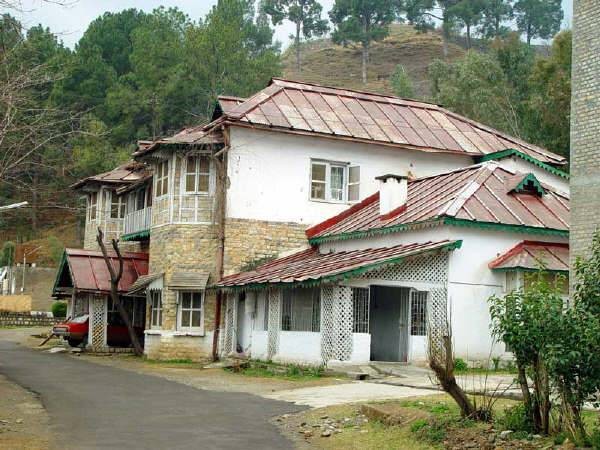
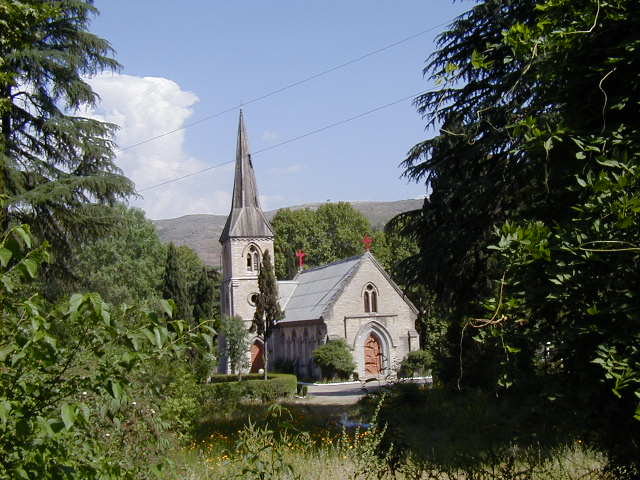
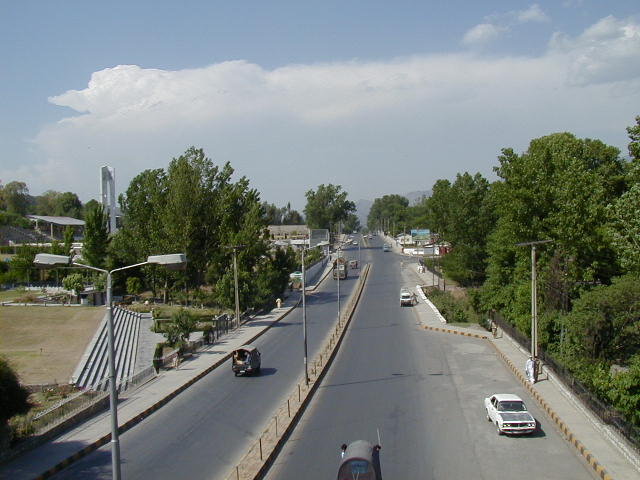
Abbottabad Old and New: Left to right - Major Abbott's House - Colonial era Church - Wide roads of today's Abbottabad
Abbottabad lies in an area which has its past connected to era of Greco-Bactrian kings. The coins discovered from the Hazara tract suggest that the area was inhabited in first century B.C. Located on N-5, the Karakoram Highway (KKH), Abbottabad is the junction point from where one can go to places like Hunza, Gilgit, Skardu and Indus Kohistan of the Karakorum Range. One can also reach from here to Swat, Dir and Chitral of the Hindukush Range or can approach to Naran, Lake Saif-ul-Muluk, Shogran and Babusar Pass of the Himalayan Range. Neelum, Lipa and Jhelum Valleys are also connected through Abbottabad. It is where the hills start. While other hill stations are deserted during winter this place has visitors due to its bracing weather all year around. The town has beautiful gardens and tall tree lined roads: splendid stretches of turf with plenty of room for polo, football, hockey and golf. One can see endangered magpies, shikras (falcons) and occasionally a golden eagle flying up there.
Ayub Teaching Hospital
After independence in 1947, the town became a
haven for seeking knowledge. Today, it is home to prestigious institutions of learning
like the Ayub Medical College, Burn Hall School, and Abbottabad Public School.
Ten miles up from Abbottabad is a teaching hospital.
Before independence, Albert Victor Unaided High School and a Municipal
Anglo-Vernacular High School were good educational institution in the town.
Pakistan Military Academy (or PMA) is located at Kakul near Abbottabad. The Academy is equivalent to
Sand Hurst
or West Point and provides training to the officers of Pakistan Army. The academy
has three training battalions and twelve companies. It is due to the high
training standards that this academy has achieved that cadets of more than 34
countries are imparted military training in this institution. The location
standard of training and the grooming of this cradle of leadership is worth
seeing. It is universally regarded as one of the finest military academies in
the world, with strong associations with other leading military academies and
institutions across the world.
Abbottabad is at its best in the Spring season when low flying clouds play hide and seek with the
towering hills surrounding the city. There is a nip in the air, with
frosty mornings and chilly evenings. While the country side wears a lush green
overcoat crested with thousands of colourful flowers. Besides fruit trees of apricot, pear, peach, plum and apple
provide an adorable look to the otherwise romantic landscape. Environment is
tranquil, pollution free and quiet. One finds countless attractions spread
around the town. There are meadows here and there, grassy stretches, wild
flowers and walking tracks. Go for climbing, trekking, rock repelling or explore Thandiani or Shinkiari valleys. Further north; go to the black mountain near
Oghi or to see the Asokan inscriptions on boulders near base of Bareri Hill
close to Mansehra. Or just sit on top of a hillock overlooking Ilyasi Mosque and
count yourself lucky for being there. Shimla Pahari is the highest place in the
Abbottabad city offers all round view of the whole city. It can be an easy walk
from the main Abbottabad city. Beside its lofty pine trees, there still remain
towering cedar trees at some places, specially in the cantonment area. Upon
visit to the Frontier Force Regimental Centre Officers' Mess, the webmaster
Pakistanpaedia found a cedar tree planted in 1850s, planted during Major James
Abbot times. The branches of the tree are so heavy that supports have to be
provided, lest these droop on the ground.
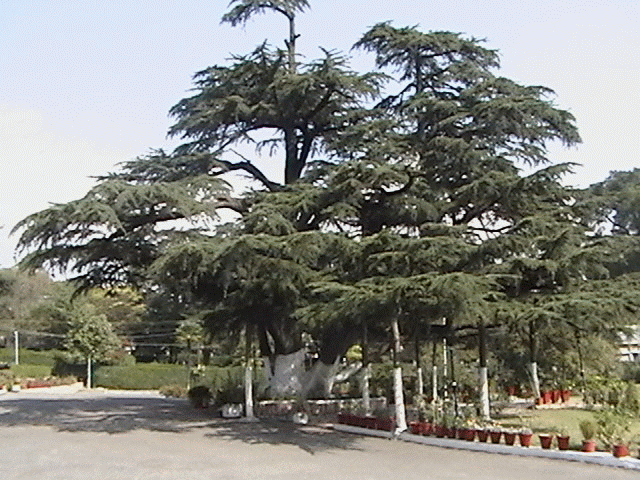
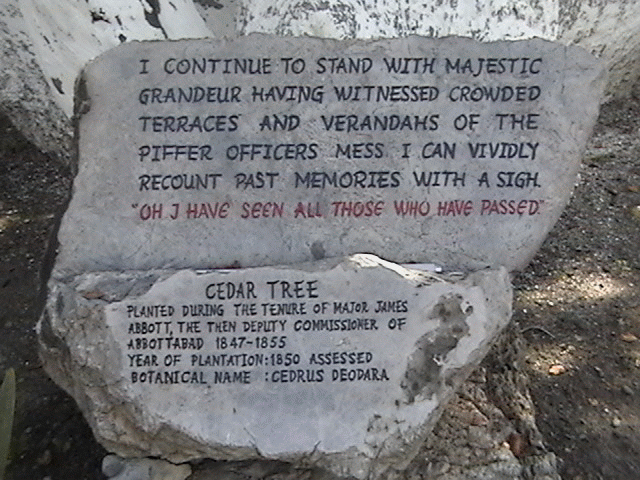
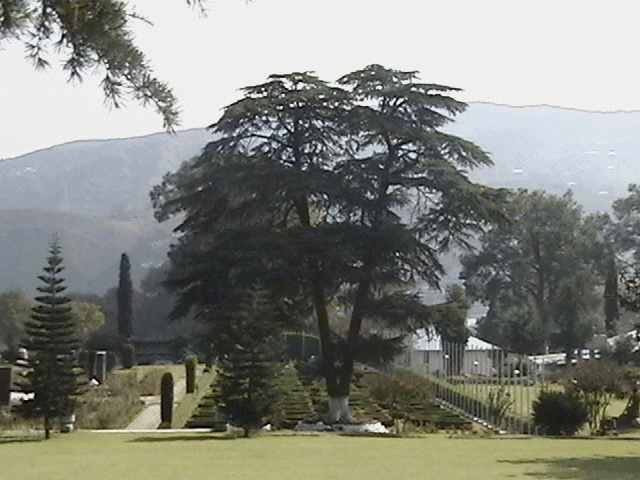
While the entire valley is breathtaking in its splendor and beauty, nothing can be better than the watching the sunrise over snow clad Thandiani, a 2,400 meters high hill feature located some 30 kilometres from Abbottabad. The name "Thandiani" means cold in the local language. It is a small plateau surrounded by pine forests. The drive to Thandiani from Abbottabad is one with lovely views on both sides of the road. There are some most beautiful glades on the way to Thandiani. The road rises gradually above Abbottabad. In the past, on the way to Thandiani, along with tall majestic pine trees one comes across groups of monkeys, though due deforestation and expanding population, their population is fast dwindling. Kalapani at 23 kilometres from Abbottabad has a beautiful local Dak bungalow. Hule Ka Danna is about two kilometres North of Thandiani. It is one of the most beautiful glades in the region. Thandiani offers lush green lovely sight. Small colorful flowers bloom here and there. It looks like someone has covered the mountains with green velvet layers and the flowing water channels increase many fold its splendor and majesty. Every scene is lovely on its own. At night the lights of Abbottabad and Azad Kashmir are clearly visible. To the east beyond the Kunhar River may be seen the snow covered mountain ranges of Kashmir, to the North and North East, the mountains of Kohistan and Kaghan are sighted, and to the North West are the snowy ranges of Swat and Chitral. A well defined and common walking trail leads from Thandiani to Murree through well wooded and attractive country (with an overnight stay in the way). In this very touristy area, apart from spectacular sights what one comes across are kindnesses from any thing but ordinary people of the area. Locals suggest to keep a lemon and suck on it while walking hard and long in hills, since it gives strength and quenches thrust.
Illyasi Mosque - Interior (Photo Courtesy friend_faraway back home) and Exterior
Ilyasi Mosque, located close to the PMA, is renowned for its round the year natural fresh water. The mosque is built over a stream of water that flows from the mountain. In front of it is a little pond-like area in which people can ride paddle driven boats. This mosque is also famous for its different architectural design. The water running from various springs is sacred for many of the people. A very important and delicious charm of Ilyasi Mosque is 'Hot Pakorras' - made from grinded grams, onions, chilies and fried in hot sizzling oil.
|
| HOME PAGE | MORE CITIES | Copyright©JalalsPages - 2005 - 2009 |